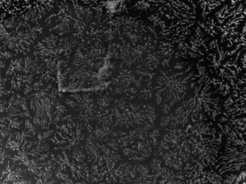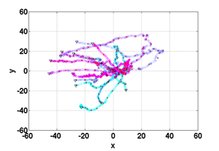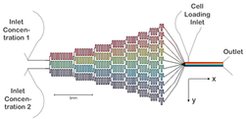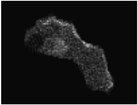Mechanics and dynamics of biological adhesion
We are a group of physicists, chemists, biologists and engineers who investigate the electro-, mechano- and chemotaxis of Dictyostelium discoideum and actin-based motility. Many of our projects involve working with microfluidics.

We study the 2D and 3D pattern formation during Dictyostelium aggregation under different conditions. We can vary for example the substrate stiffness, substrate concentration of cAMP, cell density, or decide to apply a gentle flow to the cells, all conditions that have an influence on the aggregation pattern and the aggregation dynamics. Read more about symmetry breaking, aggregation and pattern formation on population scale. We also describe aggregation patternsfrom a theoretical point of view focused on spiral dynamics of excitale media.
In a synthetic biology project, we also make artificial vesicles with the aim to observe membrane-shape instabilities due to actin polymerization. Read more about motility and biomimetics.



Actin-based dynamics and periodic stimulation of Dictyostelium
Mechanics and dynamics of cellular contacts
Cell-nanoparticle interaction: adhesion, motility and internalization dynamics



